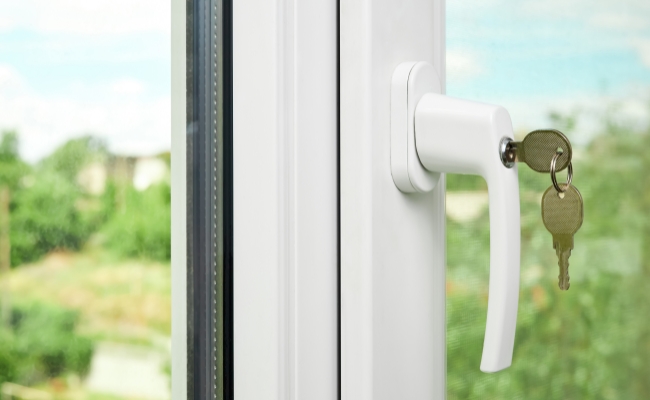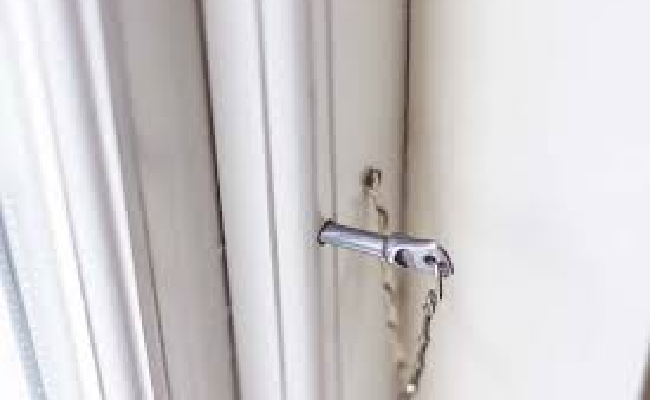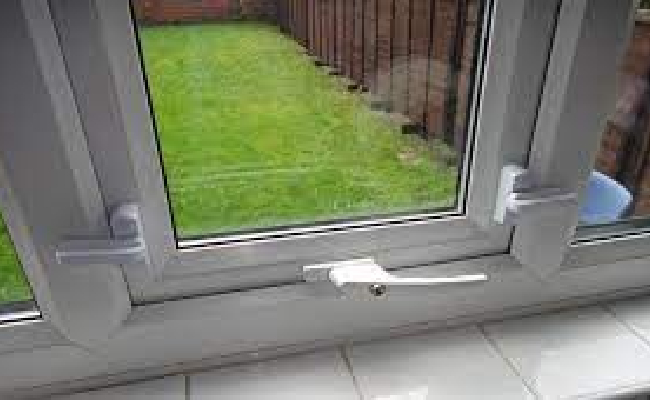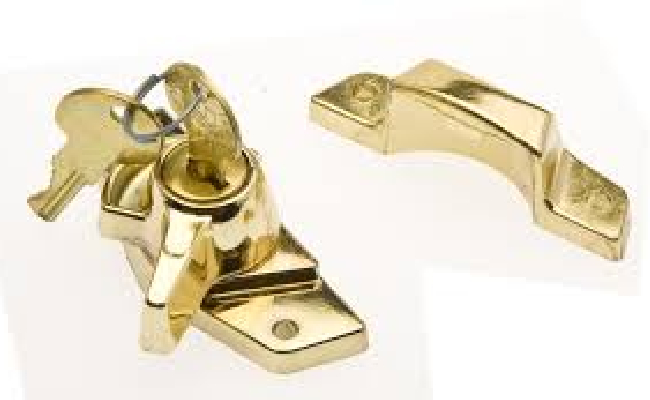Window Lock Types Explained: How to Lock a Window

Home security has become a big concern for many people. Sometimes, home windows are vulnerable to break-ins and can be easily targeted by home burglars. Choosing the right lock type and locking your window will significantly reinforce this weak point. This article will introduce some typical window lock types and explain how to install them properly.
List of Common Window Lock Types
Window locks come in various types and designs, and the market offers several common options. Here is a list of some common window lock types.
- Window pin locks
- Sliding window locks
- Hinged wedge
- Keyed locks
- Smart locks
- Sliding locks
- Sash lock
- Bolt lock
- Folding latches
Types of Window Locks: Detailed Explanation
There are many different window lock types in the market. The choice should depend on the budgets and preferences.
Window pin locks
Window pin locks are like chain locks on doors. One part of the lock is fixed to the window sash, and the other is attached to the frame. These two parts are connected by a cable or chain that prevents the window from opening wider. Window pin locks are easy to install but require a drill to tie the two ends.

Window pin locks By ChampionWindows
Sliding window locks
This type of lock can only be used on sliding windows and doors. These solid locks are mounted inside the window track, which prevents the window from being moved or opened. This type of lock can use either a lever or a thumbscrew. You can purchase them at your local hardware store and move them from one side of the window to the other.
When opening the window, remove the lock from the track. It is straightforward because the installation will take only a few seconds.

Sliding window locks By Remsafe
Window wedge
The purpose of installing a window wedge is to prevent the window from opening more than the homeowner requires. If the window wedge needs to be opened wider, the homeowner can adjust it from the inside. Window wedges have a variety of different forms. Some window wedges can slide up and down, and some are attached to the window with Velcro.

Hinged wedge By Fenesta
Keyed locks
The window keylock requires a key to close and open. Compared to other lock types, keylocks have a higher level of security. The window keylock should be installed on the window frame or sash, and it is suitable for single-hung, double-hung, and sliding windows. If you choose this type of window lock, remember to keep the key safe.

Keyed locks By stone andberg company
Smart locks
With the development of technology, window locks are growing more innovative. Some are electronic locks that do not require a key to operate. You can control the lock electronically using an app on your smartphone. Before using them, enable an entry code or other form of authorization on your phone to unlock the device. You can also monitor and control your window locks via your smartphone from anywhere. Some smart locks will send an instant notification if someone tries to unlock your windows. The real-time notifications allow you to respond immediately when emergencies happen.
Statement: We download all the pictures above from Internet. If the usage of these pictures infringe your copyright, please contact us. We will remove them from our post as soon as possible
Why Are Window Locks Important?
Installing secure window locks is a highly effective method for deterring burglars. These locks increase the difficulty of unauthorized entry and provide homeowners with enhanced protection around the clock. Window locks can be an integral part of your 24/7 home security guard and be connected to other devices, like burglar alarms or security cameras.
Additionally, many modern window locks are designed to withstand forced entry attempts, making them valuable equipment to enhance your home security further.
Do All Rooms Need Window Locks?
If you don't want to install window locks on all your windows, that's fine. Certain areas of your home, such as second-floor bedrooms, are difficult for intruders to reach. For enhanced security, consider installing window locks in several vital home areas. Basements, ground-floor windows, and any unprotected front-facing windows are vulnerable points that should be secured with locks to deter potential intruders. Additionally, it's wise to install locks on oversized windows, as they can be more susceptible to break-ins.
While second-floor windows typically don't require locking, there's an exception to this rule regarding children's rooms. Safety should always be a priority, so install window locks in your children's rooms, especially if their windows face the street.
Window Lock Installation: Step-By-Step Guide
Installing a window lock is relatively easy. Here is our step-by-step guide to walk you through the whole process.
1. Gather enough tools
To install the window locks, prepare for the tool package in advance. Conventional tools, including a window lock set, impact driver, power drill, nails, and tape, should be placed at your fingertips. Lacking specific tools may cause the installation failure. Different lock types may differ in the tools used. Please remember to check it before the installation.
2. Identify the window and lock type
You should match the lock with your window type. For example, many prefer double-hung windows with two elements that can slide up and down. In this case, you can add sliding or sash locks. The simple truth is that different window types naturally come with their compatible locks.
Once you've specified the type of window you need a lock for, it's much easier now to get the window lock accordingly. You'll find several styles of window locks for every window type, so you can choose the lock you prefer the most.
3. Place the lock in the correct position
Place the lock where the old ones were removed if you are installing a new one. Then, drilling a new hole into the windows is unnecessary. However, if you are installing a new lock type, you should measure the parameters of the locks and drill the holes on the windows' upper and lower sides. At last, aligning the entire locks over the holes you hit and double-checking that they are in the right spots is suggested.
4. Screw in your window locks
Use your screwdriver to drill the screws in. Once you have completed it, please give the screws a couple of extra drills to avoid losing. Next, test the lock's durability and security by repeatedly opening and closing it.
Bonus Tips: How to Choose the Right Lock Ratings
The American National Standards Institute (ANSI) has defined grades for locks, as these grades determine the quality of the lock. Here are the grades your lock can be rated:
- Grade 1: The highest rating for residential locks. They are tough to break into and unlock with violence. Therefore, they are the most expensive options in the market.
- Grade 2: Medium locks. Most of the locks in the market can be classified in grade 2. Grade 1 locks will keep your home safe but less durable than they are.
- Grade 3: Basic locks. This type of locks can be an ideal supplement to grade 1 and grade 2 locks, thus making them the most cost-effective options.
You can choose a suitable lock rating based on your specific security needs.
FAQs
How can I lock a window that has no lock?
Driving in a screw is an effective window-locking option that doesn't involve using a lock. Driving a screw into the top of the upper track can keep intruders from lifting a gliding window out of its path and entering the house.
Can burglars open locked windows?
Of course, they can. Adding a lock to your window can be an effective way to deter home burglars. But the sad truth is that some window types are easy for thieves to break or bypass. For example, some burglars may attempt to force the window open by applying physical pressure to the frame or sash.
What is the hardest glass to break into?
If you are eager to know what unbreakable glass is, it is widely accepted that polycarbonate panels are the type you want. Polycarbonate panels are significantly more challenging to break than standard and laminated glass windows due to their rigid material.
What is the typical lifespan of windows?
The average lifespan of windows is between 15 and 30 years, which depends on the craftsmanship of the original installer, the materials used, and the weather conditions where you live.
Conclusion
Choosing the right window lock types and adequately securing your windows are essential to home security. We have introduced the installation process and different kinds of window locks to you, which can effectively prevent the loss of valuables and strengthen weak security points. Hope you have got useful information in mind. Do you have more insights to share? Please let us know by commenting below. Please share this article with your friends.
Search
Be in the Know
Security insights & offers right into your inbox
